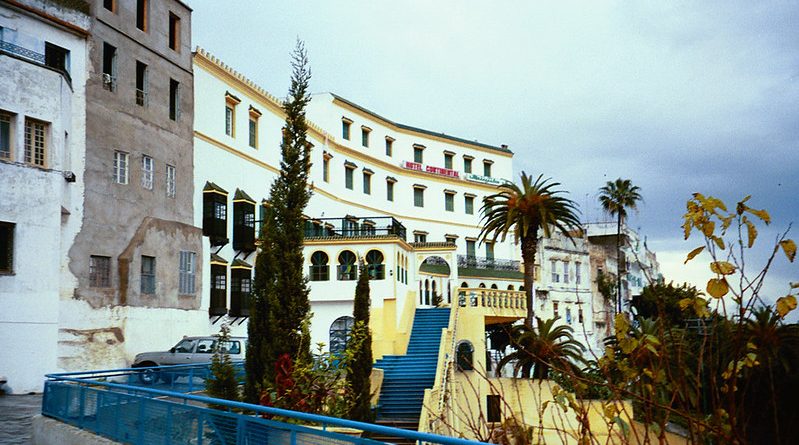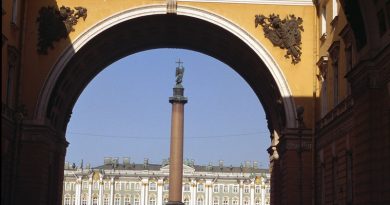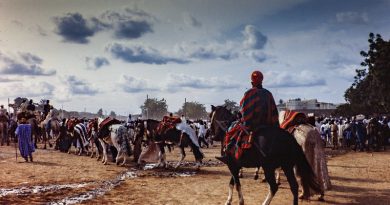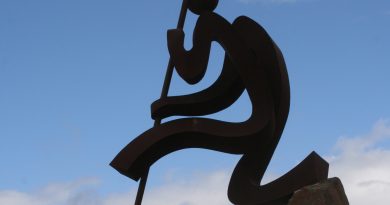International and Exotic- The Allure of Tangier
Tangier’s unique character is thanks to its strategic position on the Straits of Gibraltar as the gateway between Europe, the Western Mediterranean and North Africa. Because of this it’s been a prize for a string of empires and has passed through the hands of many through the ages.
In the first half of the twentieth century, Tangier was deemed too important a possession for only one European country to control and was designated an ‘International City’ governed by a council of foreign consuls from nine countries.
The free-for-all ‘Interzone’, as it was dubbed by Beat writer William Burroughs, became a magnet for writers, artists, thrill-seekers and sex-cruisers. In the 1930s Tangier’s denizens included committed hedonist Barbara Hutton (the Woolworth’s retail chain heiress), who outbid General Franco for her palace in the Kasbah, and American expatriate author Paul Bowles (author of The Sheltering Sky), who was joined by fellow twentieth century literary icons Burroughs and his Beat Poet companions Jack Kerouac and Allen Ginsberg. Tennessee Williams spent time in Tangier drafting Cat on a Hot Tin Roof and the playwright Joe Orton landed in here to cruise for gay sex and renamed the place ‘Costa del Sodomy’.
There are very few ‘sights’ as such in the city, adding to the temptation to rush through it. To really enjoy the city you’ve got to be an urban wanderer rather than a sight obsessed tourist and there are still vestiges of its salad days.
The five star Hotel El Minzah, seat of exotic luxury, counts Cecil Beaton, Truman Capote and Ian Fleming among its former guests; Fleming wrote the James Bond novel Diamonds are Forever on an Andalusian patio here. Ask at the desk about taking a tour.
Outside the Medina in the Ville Nouvelle’s Rue Magellan is Hotel El Muniria where Burroughs wrote The Naked Lunch. Pop next door to the Tanger Inn and you’ll be faced with walls of photos from that period, taken by Allen Ginsberg when he and Jack Kerouac came over to sort out Burrough’s uncoventional manuscript.
Café Central on Petit Soco back in the Medina was another Burroughs haunt where he’d always order a mint tea, sit and recover from his various excesses for hours on end. Café Detroit, housed in an ugly concrete block on the Rue Riad Sultan, was the favourite of another Beat writer and artist Brion Gysin, a close collaborator of Burroughs. It then became the venue for a dynasty of Moroccan musicians whose sounds appeared on the album ‘Brian Jones presents the Pipes of Pan at Jajouka’ by the founder of the Rolling Stones.
Painters were drawn here by the gorgeous North African light, and one of the most famous was probably . He stayed at the Grand Hotel Villa de France,
Morocco was the first power to recognise the USA as an independent country. In response to this, an American embassy was established here in 1777 and is now a fascinating museum. The most interesting feature is the Paul Bowles room.
If you want to meet Tangier’s dwindled number of expats trying to live in a bygone age you need to seek out Guitta’s Restaurant. This place, screened from view because it sells alcohol opposite the new Hassan II Mosque, has been run by an Italian family since 1945. It’s a wonderful little place, a French-style house set in a beautiful walled garden that serves up a famously good Sunday Roast with a helping of slow forgetfulness.
Tangier’s libertarian attraction has all but gone – a washed up beauty queen whose suitors have moved on to younger, more exotic locations. Yet there are still flashes of its unfettered ways; in 1989 the billionaire publisher Malcolm Forbes took over the Palais Mendoub for his seventieth birthday. He laid on 300 Berber horsemen, 600 drummers, acrobats and bellydancers and flew out guests like Elizabeth Taylor and TV journalist Walter Cronkite. And there’s still the odd creative expat type quietly making their life in the fractured life of Tangier’s Medina.
Meanwhile, the city itself has still kept its hand in shady dealings however with an explosion in drug running as well as a burgeoning commerce in people. Tangier is now one of the human trafficking centres of Northern Africa with hordes of migrants from sub-Saharan Africa passing through its port. Moroccan and Spanish boat captains charge upwards of US $1000 a person to smuggle them into Spain. Since the erection of a US $120 million radar system along the Spanish coast that serves as an electronic fence between the Spanish port city of Algeciras and Tangier the levels of illegal entry have dropped but bodies of those who’ve risked their lives on the rickety, overcrowded vessels still wash up on Spanish shores every year.
Destination – Morocco




